
Hello friends, in today’s article, we will see which parts of the Electrical Substation are included and what is done. The power grid is essential for power generation from the power plants to its distribution and transmission. Electrical substations are required for all processes of the power grid.
These are the most essential devices used to generate electricity in an electrical substation. The required amount of electricity at the substation can be changed to supply electricity to the customer by changing the frequency and voltage.
Electrical period substations can be divided into different parts like pole-mounted, indoor, outdoor, converter, distribution, transmission, switching substation, etc. In some power generation like the thermal power plant, hydropower plant wind energy pant any collector can take note of substations,
Which can be useful for power transfer from some turbines to a single transmission unit.
Electrical Substation Components:
Following is the list of components used in the electrical substation:
| Sr. No. | Substation Components |
| #1 | Power Transformer |
| #2 | Instrument Transformer |
| #3 | Voltage Transformer |
| #4 | Current Transformer |
| #5 | Lightning Arrester |
| #6 | Wave-Trapper |
| #7 | Circuit-Breaker |
| #8 | Bus Bar |
| #9 | Isolator in Substation |
| #10 | Batteries |
| #11 | Switchyard |
| #12 | Relay |
| #13 | Capacitor Bank |
| #14 | Carrier Current Device |
| #15 | Insulator |
The substation for electricity has various equipment like an isolator, bus bar, power transformer, etc., which can be used to send electricity from one place to another, and all these are connected to the substation.
Electrical substation components are essential for substation installation. The substation equipment and its functions mainly include the following equipment. The electrical substation design is a complex method with a complete engineering plan.
The design of the substation includes the switching system, planning, and placement of equipment, selection of components as well as orders, support of engineers, structural design, design of the electrical layout, protection of relays, and main device ratings.
#1. Power Transformer:

The main use of a power transformer is to increase the voltage generated by the power plant and to supply the transmission line. While taking a distribution, this is used to reduce voltage. Typically transformers up to 10 MVA (Mega-volt-Amperes) are filled with oil and kept naturally cool. Similarly, transformers with a capacity of more than 10 MVA (Mega-volt-Amperes) are kept cool with air or water.
Usually, such transformers operate at full load. It is isolated from low-load conditions. Therefore, power transformer efficiency can be highest in full load mode.
#2. Instrument Transformer:
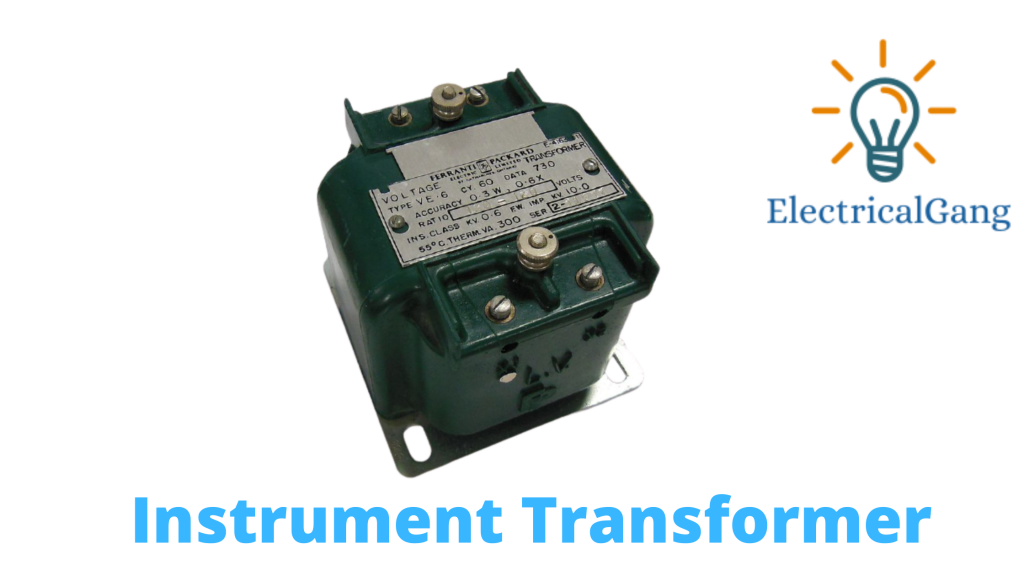
The main use of an instrument transformer is to reduce high voltage for safe and real value. These values can be calculated by conventional devices. The range of voltage and current is 110 V and 1A (or) 5A. This transformer is also used to operate AC-type relays by providing current and voltage.
Such a transformer can be divided into two parts: the current transformer and the voltage transformer.
#3. Voltage Transformer:
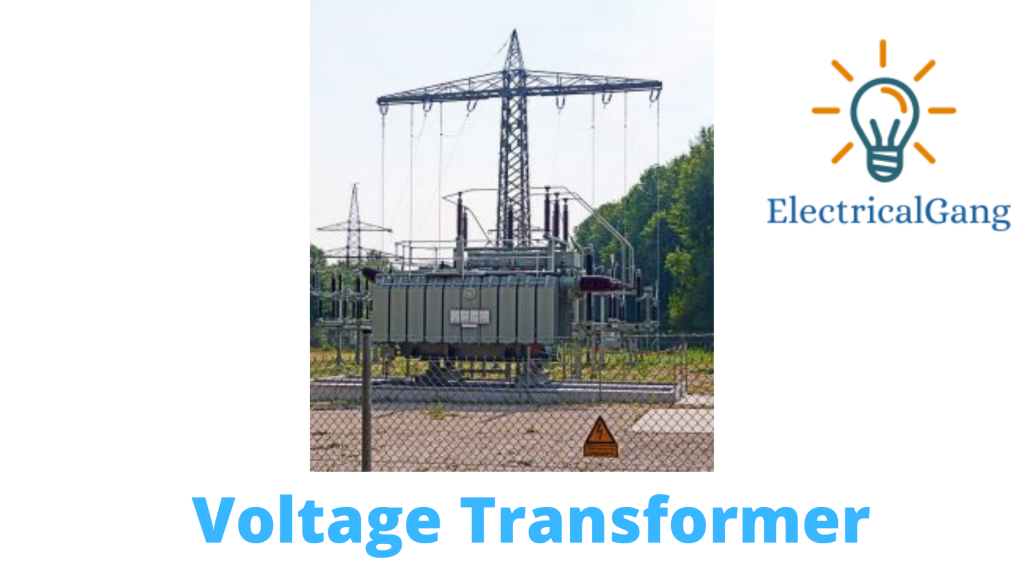
This transformer can be defined as it is an instrument transformer used to convert voltage from a superior value to a smaller value.
#4. Current Transformer:

A current transducer is an electrical device whose main use is to change the value of current from a better value to a modest value. This type of transformer is applied in parallel by a meter, control device, and AC equipment.
#5. Lightning Arrester:
This is the first component of an electrical substation to be used to protect the remaining substation component against high voltage. As well as preventing the amplitude and duration of the current flow. The components of the Lightning Arrester are connected in parallel with the earthing, which protects the rest of the device. These components divert the flow of current to the ground and therefore protect the conductor of the system as well as the insulation from damage.
#6. Wave-Trapper:
The wave trapper is located on the incoming lines to trap the high-frequency signal. This signal (wave) comes from a remote station that interrupts the current and voltage signals. This component trips the high-frequency signal and redirects them to the telecom board.
#7. Circuit-Breaker:
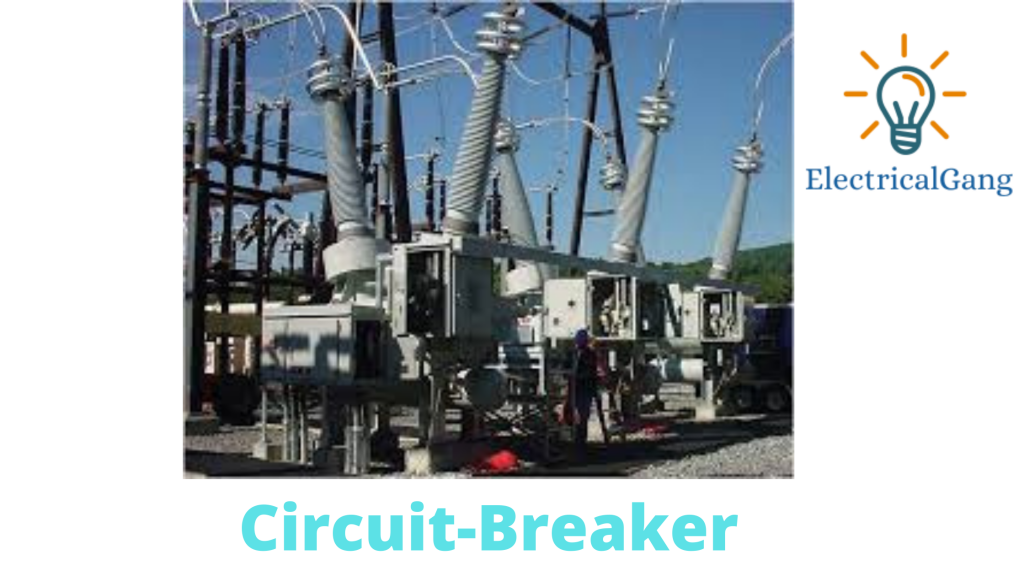
There is only one type of electrical switch, and this is used to open and close the circuit in case of any fault or error in the system. This consists of two rotating parts that are closed in the normal state when the relay sends a signal to the circuit breaker in case of any kind of fault in the system so that these two parts are separated. So that errors in the system can be easily corrected.
#8. Bus Bar:
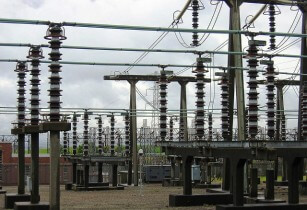
The busbar in the substation is a very important component that carries a kind of current with which many connections are made. In other words, it is a kind of power connection where a lot of power is coming and going.
As the defect occurs in this component, all circuit components associated with the section should then be tripped out to provide complete isolation in a short time so that the conductors ignore the fault fitting due to overheating.
#9. Isolator in Substation:
The isolator is a one-of-a-kind switch that is used in the event of a fault in the flow of the timeline. These switches are also known as disconnected switches and are always used under no-load conditions.
Isolators are not made by an arc-quenching device, and they have no current-making or current-breaking capability. In some situations, it is used to isolate the current charging of the transmission line.
#10. Batteries:
In large substations, the lighting relay or control system is operated by batteries. The battery is connected to a special operating cell which depends on the operating voltage of the special DC circuit.
The battery can be divided into two parts such as acid-alkaline and lead acid. Lead-acid batteries are used due to the high voltage or very low voltage of power stations and substations.
#11. Switchyard:
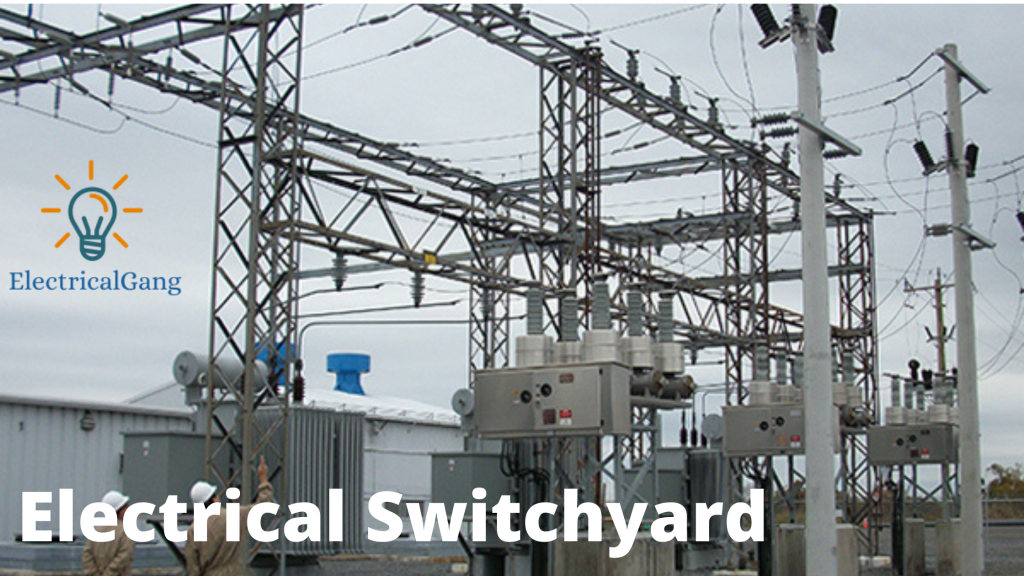
The switchyard is an important part of the connection between the power station and the transmission. The switchyard is used to transmit power, which is generated from the substation to the transmission line or to the power station at the preferred level of voltage.
#12. Relay:
A relay is an electrical device that is of utmost importance for the protection of a component of a substation. This is a type of fault-detecting device that is used to detect a fault in the system and sends a signal to the circuit breaker.
This defective part is separated from the line with the help of a circuit breaker which receives the signal from the relay. Relays are mainly used to protect devices from hazards and damage.
#13. Capacitor Bank:
This is made with the help of capacitors that are connected in series or in parallel. The main function of this device is to store electrical energy in the form of an electrical charge, which helps in increasing the power factor in the system. As the source, the capacitor bank acts for the reactive power, and the phase difference between the current as well as the voltage will decrease.
They will increase the capacity of the ripple current of the power supply and eliminates unnecessary characteristics within the system. The capacitor bank is an efficient method to save power factor as well as power-lag problem correction.
#14. Carrier Current Device:
Carrier current devices are fixed in substations for telemeters, supervisory control, relaying, and communication. The system is properly placed in the conductor room by connecting to a high-voltage power circuit.
#15. Insulator:
The insulator is used not only to fix the busbar system but also to insulate it. Insulators can be divided into two sections, one is the post type, and the other is the bushing type. A post-type insulator ceramic body is used, and the cap of such an insulator is made with the help of material like cast iron. And attached directly to the strip of the busbar.
While other types of insulators (Bushing Type) are made of ceramic shell bodies and high and low lotion wash, which are useful to fit the bus-bar position, thus, the next trends in the development of technology have made a lot of progress in the installation as well as maintenance of electrical substations.
For example, Supervisory Control and Data Acquisition (SCADA) automation made it available to control power substations by design from a remote location.
Like this post? Could you share it with your friends?
Suggested Read –
- Difference Between MCB and MCCB | MCB VS MCCB
- Vizio TV Remote Not Working? | Here’s How to Fix It
- How to Fix YouTube TV Freezing Issues in Easy Steps
- How to Solve LG Content Store Not Working Problem?
- How to Fix Samsung Soundbar Remote Not Working Problem?
Most Commonly Asked Questions:

Which Components Are Used in Power Substation Components?
Following is the list of components used in power substation components:
| Sr. No. | Substation Components |
| #1 | Power Transformer |
| #2 | Instrument Transformer |
| #3 | Voltage Transformer |
| #4 | Current Transformer |
| #5 | Lightning Arrester |
| #6 | Wave-Trapper |
| #7 | Circuit-Breaker |
| #8 | Bus Bar |
| #9 | Isolator in Substation |
| #10 | Batteries |
| #11 | Switchyard |
| #12 | Relay |
| #13 | Capacitor Bank |
| #14 | Carrier Current Device |
| #15 | Insulator |
Components of Substation:
Following is the list of Components of the Substation:
| Sr. No. | Substation Components |
| #1 | Power Transformer |
| #2 | Instrument Transformer |
| #3 | Voltage Transformer |
| #4 | Current Transformer |
| #5 | Lightning Arrester |
| #6 | Wave-Trapper |
| #7 | Circuit-Breaker |
| #8 | Bus Bar |
| #9 | Isolator in Substation |
| #10 | Batteries |
| #11 | Switchyard |
| #12 | Relay |
| #13 | Capacitor Bank |
| #14 | Carrier Current Device |
| #15 | Insulator |
Switchyard Components:
Following is the list of Switchyard Components:
| Sr. No. | Switchyard Components |
| #1 | Switchyard Component Sizing |
| #2 | Instrument Transformers |
| #3 | Busbars |
| #4 | Disconnectors |
| #5 | Circuit Breakers |
| #6 | Auxiliary System |